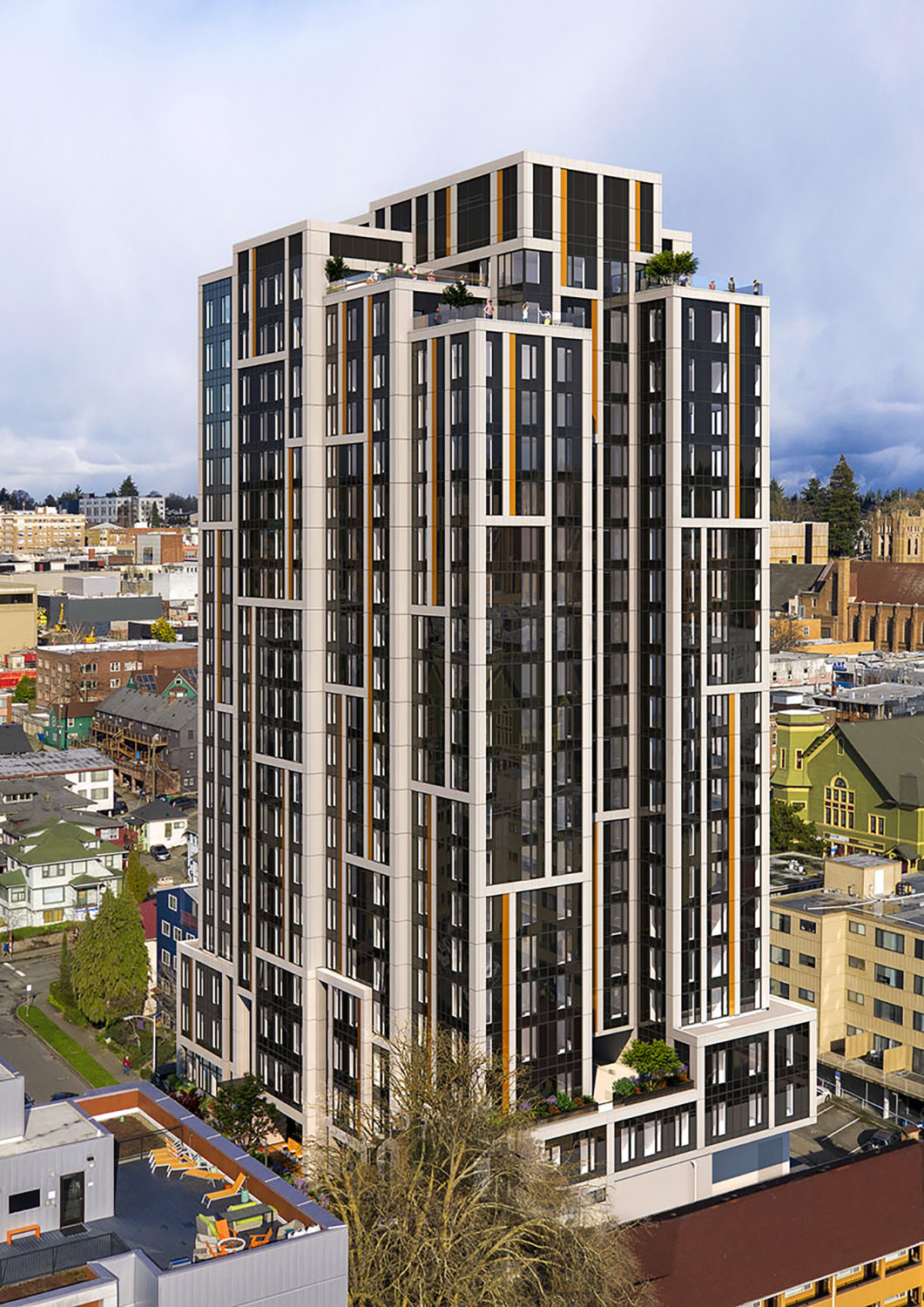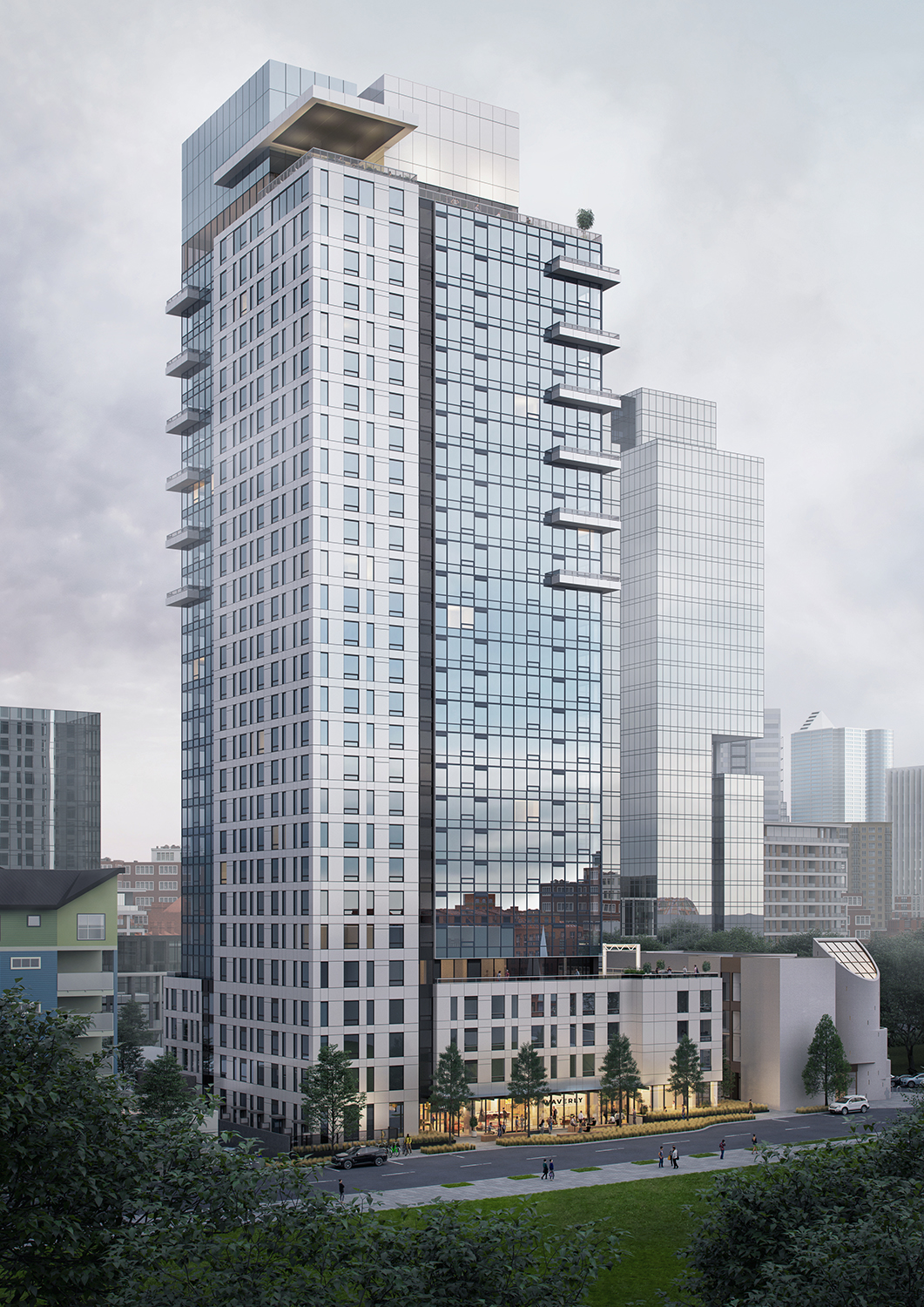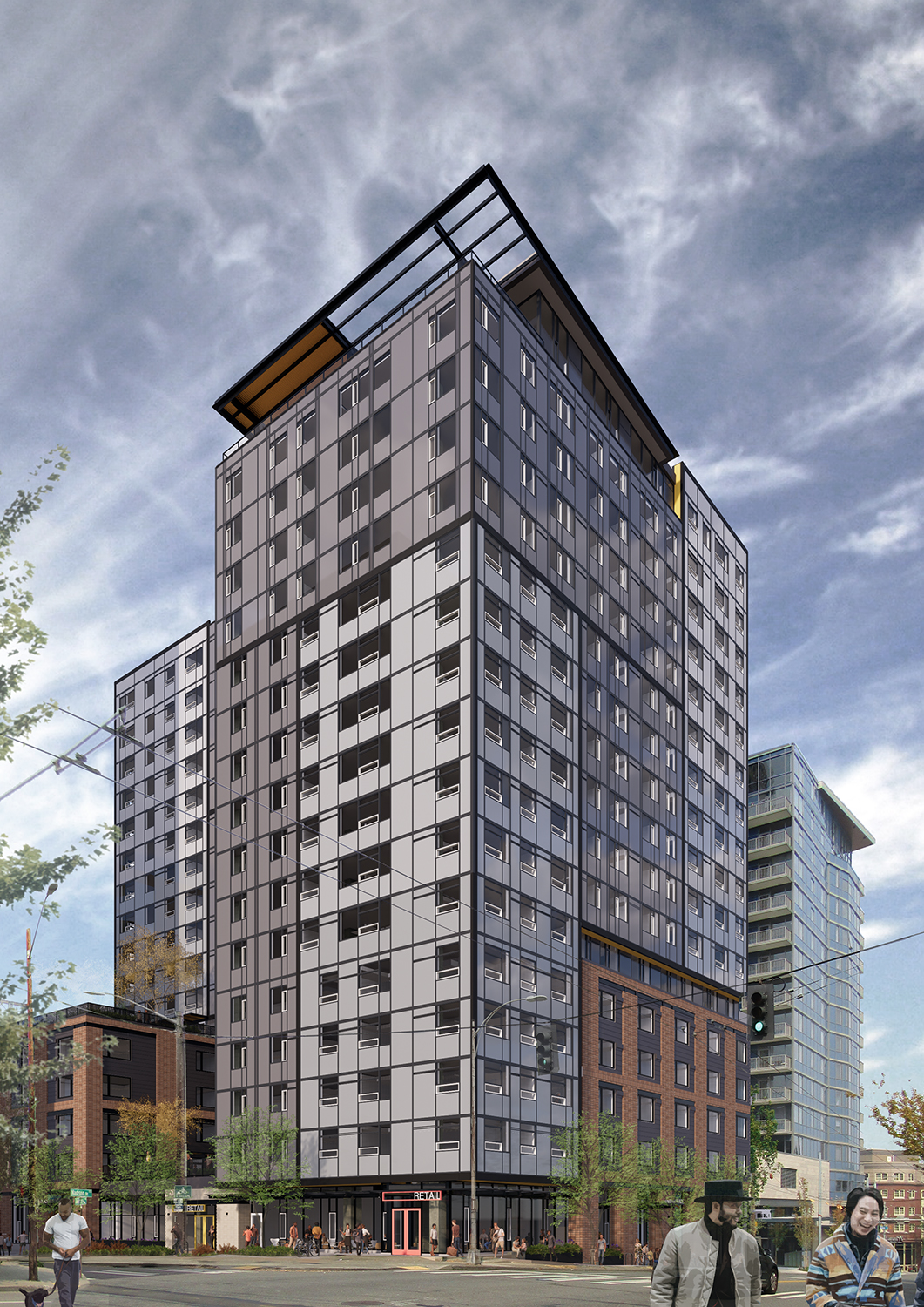By Brian Steinburg
Since 2000, Brian has been involved in the design, documentation and management of urban high-rise and mid-rise projects at Weber Thompson. As a Principal, Brian manages large, complex, multi-year projects from pre-design to construction administration; he is a leader in the Quality Management Task Force, and runs the firm’s internal Project Manager Forum.
Seattle, like many large cities around the country, is facing a housing crisis. Affordability is the concern most discussed, however, housing diversity is equally challenging, especially when coupled with affordability.
What do I mean when I say “housing diversity”? Housing that meets a diverse community’s needs, whether they be cultural, economic, or in some cases medical / social services. Many people need to have better proximity to transportation, jobs, education, and services, but cannot pay the premium cost of urban housing.
- The Accolade
- Waverly
- Madison & Boylston
To meet these needs, high-rise construction seems like a natural fit. High rise is typically zoned in areas that provide jobs, transit, and access to services, while also maximizing the number of residents per acre of developed land thus, lowering the land cost per resident served.
Unfortunately, large urban development is also a costly and risk-laden venture. Driven by the need to mitigate these risks and costs with higher rents, high-rise housing has catered to and become essentially exclusive for those with the highest incomes. Therefore, realizing a high-rise model to meet the needs of moderate to lower income residents, the high-rise paradigm will need to change for these projects.
Even with these challenges, developers who specialize in providing a diverse palette of housing product are turning to the high-rise model. They are maximizing the benefits of new zoning changes and making partnerships with public agencies and other developers. Meanwhile, developers are adjusting the typical high-rise program and tailoring the product to the target resident’s needs in order to streamline costs. These efforts are making high rise an option for a variety of housing types that previously would not have considered it.
While luxury housing is still the predominant high-rise model in Weber Thompson’s portfolio, in the past few years, we have worked on a number of high-rise projects that push the boundaries of a previously exclusive development model. In the coming weeks we will highlight three such projects, and illustrate the development goals, challenges and triumphs of each.
Next – The Accolade: High-rise housing for the student experience



